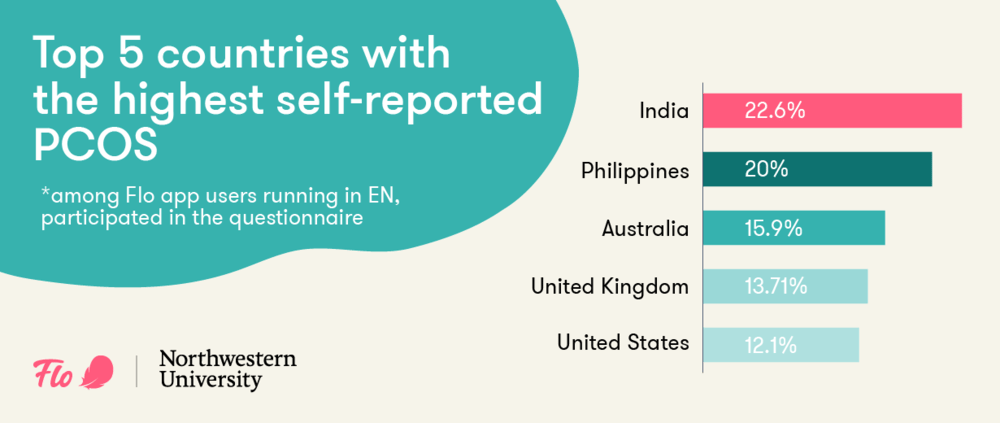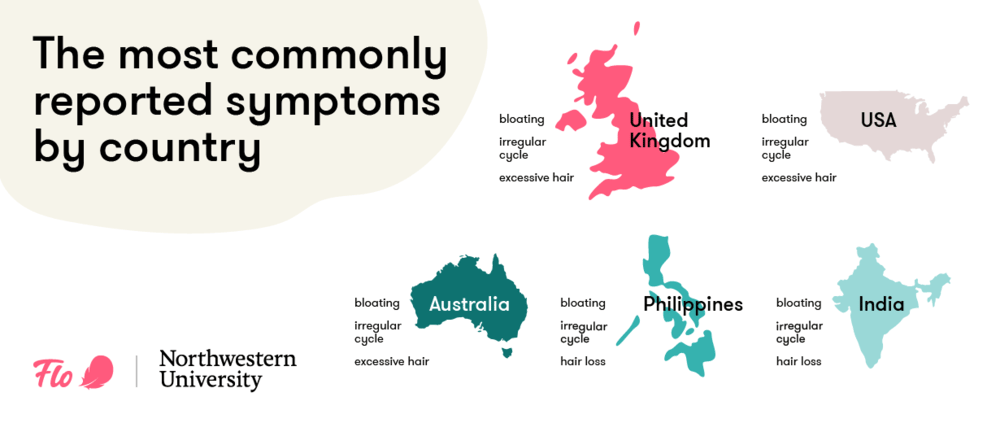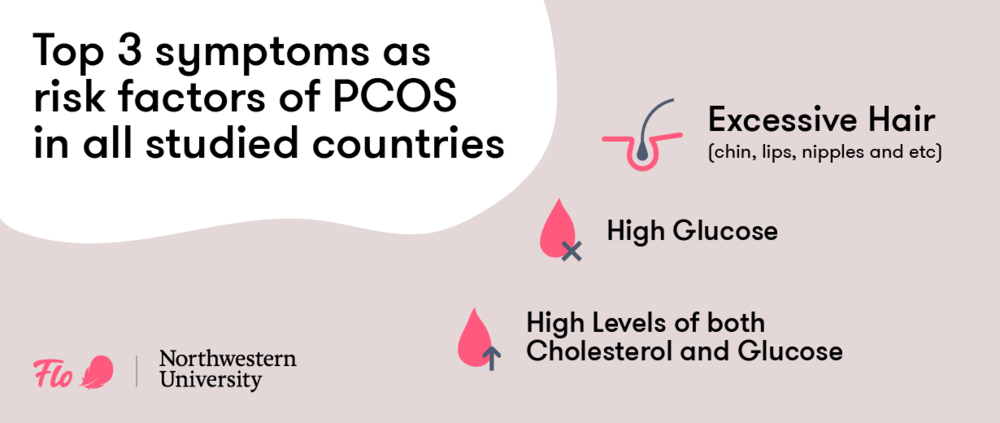Approximately 1 in 10 women at the reproductive age has polycystic ovary syndrome (PCOS). To spread awareness on this topic, Flo and Northwestern University in partnership with Tarun Jain, MD, Associate Professor of Obstetrics and Gynecology at Northwestern University Feinberg School of Medicine, conducted a study on PCOS, launched in October 2019.
-
Tracking cycle
-
Getting pregnant
-
Pregnancy
-
Help Center
-
Flo for Partners
-
Anonymous Mode
-
Flo app reviews
-
Flo Premium New
-
Secret Chats New
-
Symptom Checker New
-
Your cycle
-
Health 360°
-
Getting pregnant
-
Pregnancy
-
Being a mom
-
LGBTQ+
-
Quizzes
-
Ovulation calculator
-
hCG calculator
-
Pregnancy test calculator
-
Menstrual cycle calculator
-
Period calculator
-
Implantation calculator
-
Pregnancy weeks to months calculator
-
Pregnancy due date calculator
-
IVF and FET due date calculator
-
Due date calculator by ultrasound
-
Medical Affairs
-
Science & Research
-
Pass It On Project New
-
Privacy Portal
-
Press Center
-
Flo Accuracy
-
Careers
-
Contact Us
Flo and Northwestern University PCOS Study: First Results Revealed

In this study, PCOS symptoms relative to the country were analyzed to give a clear overview of the condition among users around the world.
Now we’re ready to share the results and insights of this research with you.
Research Overview
The study was based on a questionnaire, available to Flo users for one month, about PCOS-related symptoms and previous PCOS diagnosis. There were a few criteria for participants:
- Age 18–44
- Users who track their cycle or are trying to conceive
All users in the study agreed to the use of their de-identified data for research purposes.
PCOS Geographically
According to the research, most Flo app users who completed the PCOS questionnaire were coming from the following five countries: United States (U.S.), United Kingdom (U.K.), India, the Philippines, and Australia.
On the infographic below you can see the allocation rate of self-reported PCOS cases in percentages among these countries:

Take a quiz
Find out what you can do with our Health Assistant
Most Common Symptoms
Another insight revealed the most common symptoms of PCOS among Flo users.
Users with PCOS in the U.S., U.K., and Australia shared the following list of their most predominant symptoms:
- Bloating
- Hirsutism (excessive hair growth)
- Irregular cycles
Women with self-reported PCOS in India and the Philippines reported similar symptoms, with an obvious contrast in one specific point — baldness here is a predominant sign as opposed to hirsutism in the U.S., U.K., and Australia. The list of the most commonly reported PCOS symptoms in India and the Philippines looks like this:
- Bloating
- Baldness
- Irregular cycles

Top Three Predictors of PCOS
A variety of symptoms as risk factors of PCOS in all studied countries were also analyzed in the research. The three most common signs, or predictors, of PCOS that can signal to check with a doctor, are the following:
- Hirsutism (excessive body hair growth)
- High blood glucose
- High levels of both cholesterol and glucose
Other signs of PCOS that the research participants shared include:
- Acne
- Skin hyperpigmentation
- Bloating
- Heavy menses
- Baldness
- Family history of PCOS
- Irregular cycles
- Inability to conceive for > 1 year

Summing Up
The research helped to get a more clear picture of PCOS allocation and symptoms worldwide.
- As we found from the study, some countries revealed higher PCOS rates than others.
- People with PCOS share the same most common symptoms worldwide, though there are some distinctive symptoms that might be found within a specific country.
- There are three main signs as risk factors of PCOS that were found to be common in studied countries: hirsutism (excessive body hair growth), high blood glucose, and high levels of both cholesterol and glucose. These symptoms can help predict the disorder to get early medical assistance, if found.


Hey, I'm Anique
I started using Flo app to track my period and ovulation because we wanted to have a baby.


The Flo app helped me learn about my body and spot ovulation signs during our conception journey.


I vividly
remember the day
that we switched
Flo into
Pregnancy Mode — it was
such a special
moment.
Real stories, real results
Learn how the Flo app became an amazing cheerleader for us on our conception journey.




